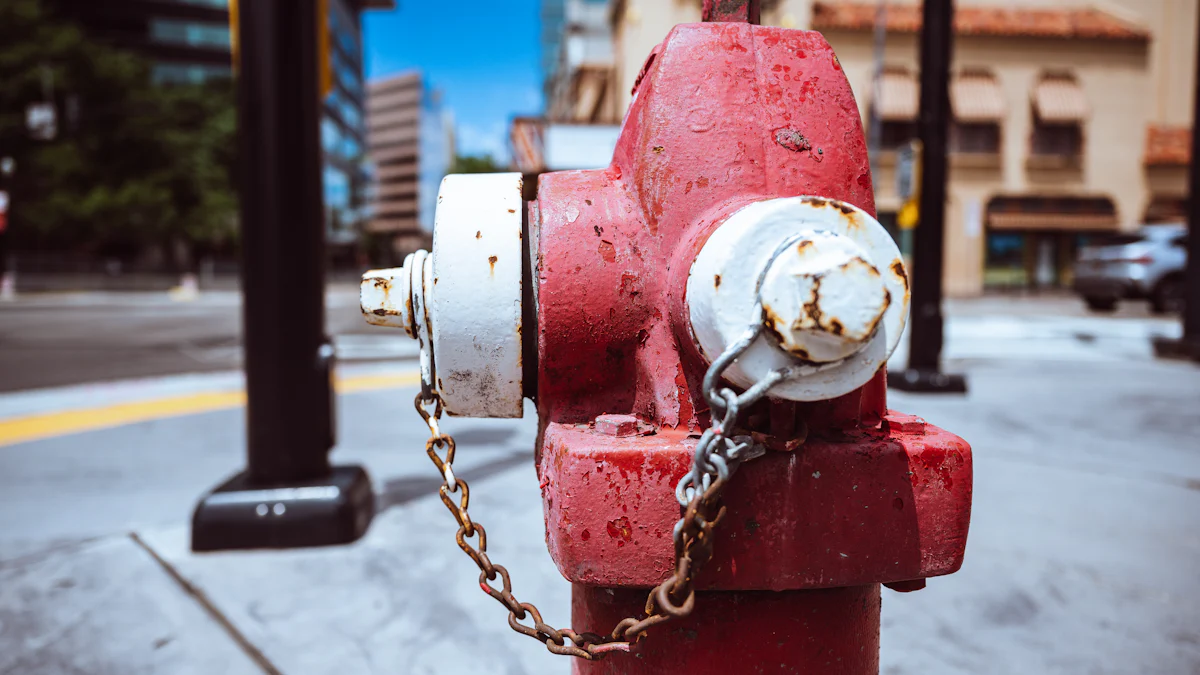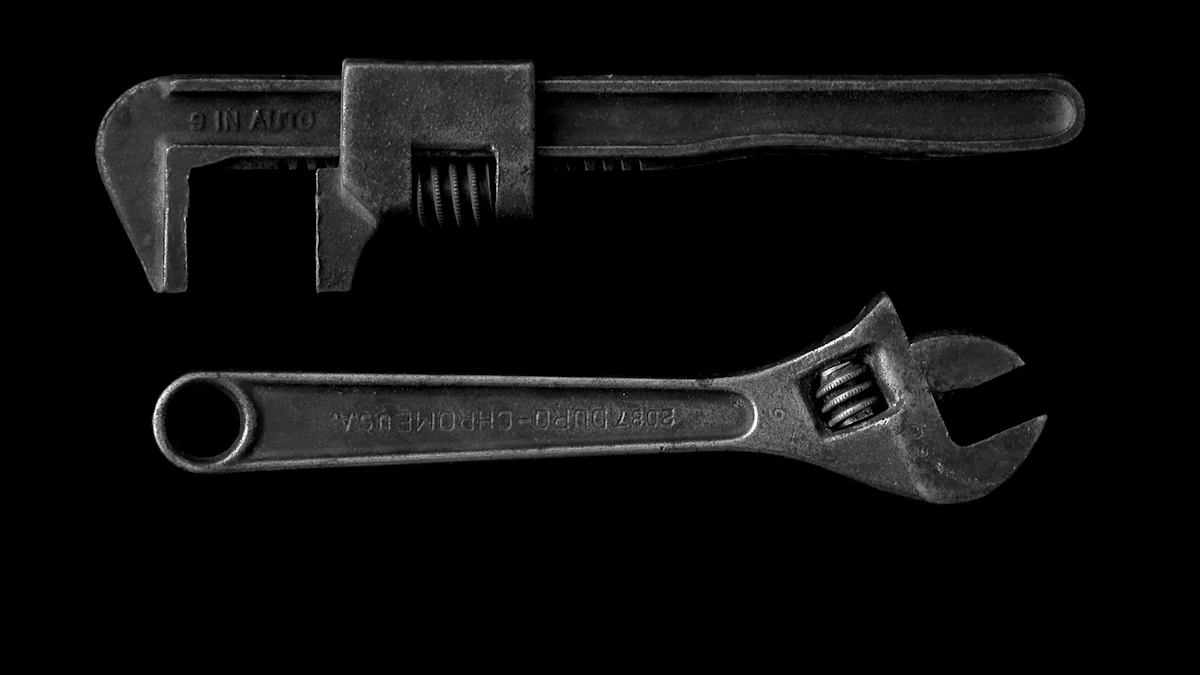
Fire hydrant wrenches play a vital role in firefighting operations. These tools remove hydrant caps and open valves, ensuring quick access to water during emergencies. Firefighters rely on adjustable designs to fit various hydrant nuts. The blog explores differences between France and the United States. Understanding these variations enhances firefighting efficiency and safety. Knowledge of different types and applications proves crucial for effective firefighting.
Fire Hydrant Wrenches in France

Types of Fire Hydrant Wrenches Used
Standard French Wrench
The standard French fire hydrant wrench serves as a fundamental tool for firefighters. This wrench is designed to fit the specific pentagon nuts found on French hydrants. Manufacturers use sturdy forged construction to ensure durability and reliability. The standard wrench provides essential functionality for opening and closing hydrants efficiently. Firefighters rely on this tool for its simplicity and effectiveness in emergency situations.
Specialized Wrenches
France also utilizes specialized fire hydrant wrenches for unique applications. These wrenches include the SureTork Socket Wrench, which offers precise torque control. The design allows quick adjustments in the field, making it versatile for different hydrant types. Another innovation is the Specialty Magnetic Hydrant Wrench. This tool prevents unauthorized access and tampering with hydrants. Firehouses in urban areas often carry these specialized wrenches to enhance security and operational efficiency.
Applications and Usage
Urban vs. Rural Areas
In urban areas, firefighters encounter densely populated environments. The fire hydrant wrench plays a crucial role in accessing water quickly. Urban hydrants often require specialized wrenches due to varying designs and security features. In contrast, rural areas may use more standard wrenches. The simplicity of the standard wrench suits the less complex hydrant systems found in rural settings. Firefighters must adapt their tools to the specific needs of each environment.
Maintenance and Regulations
Regular maintenance ensures that fire hydrant wrenches remain functional and reliable. Fire departments in France adhere to strict regulations regarding tool upkeep. Inspections and servicing occur frequently to prevent malfunctions during emergencies. Regulations also dictate the types of wrenches used in different regions. Compliance with these rules guarantees that firefighters have the right tools for the job. Proper maintenance and adherence to regulations enhance firefighting readiness and safety.
Fire Hydrant Wrenches in the United States

Types of Fire Hydrant Wrenches Used
Standard American Wrench
The standard American fire hydrant wrench is a crucial tool for firefighters. This wrench fits pentagon nuts up to 1-3/4 inches or square nuts up to 1-1/4 inches. Manufacturers use sturdy forged construction to ensure durability and reliability. Firefighters use this wrench to remove hydrant caps and operate hydrants efficiently. The design provides a strong grip, allowing quick access to water during emergencies.
Advanced Wrench Models
Firefighters in the United States also use advanced wrench models for specialized tasks. These models include the SureTork Socket Wrench, which offers precise torque control. The design allows quick adjustments to fit different hydrant types. Another innovation is the Specialty Magnetic Hydrant Wrench. This tool prevents unauthorized access to hydrants. Firehouses in urban areas often carry these advanced wrenches to enhance operational efficiency.
Applications and Usage
Urban vs. Rural Areas
In urban areas, firefighters face densely populated environments. The fire hydrant wrench plays a vital role in accessing water quickly. Urban hydrants often require specialized wrenches due to varying designs and security features. In contrast, rural areas may use more standard wrenches. The simplicity of the standard wrench suits the less complex hydrant systems found in rural settings. Firefighters must adapt their tools to the specific needs of each environment.
Maintenance and Regulations
Regular maintenance ensures that fire hydrant wrenches remain functional and reliable. Fire departments in the United States follow strict regulations regarding tool upkeep. Inspections and servicing occur frequently to prevent malfunctions during emergencies. Regulations dictate the types of wrenches used in different regions. Compliance with these rules guarantees that firefighters have the right tools for the job. Proper maintenance and adherence to regulations enhance firefighting readiness and safety.
Comparative Analysis
Key Differences
Design and Functionality
Fire hydrant wrenches exhibit distinct design features in France and the United States. The French Guillemin wrench incorporates a curved part that applies pressure on the ring. This design ensures a secure grip on French hydrants. In contrast, the American tricoise wrench uses a hooked part to clutch a notch. This feature adapts to the specific design of American hydrants.
The SureTork wrench offers advanced functionality compared to traditional torque wrenches. A quick-release socket feature allows rapid adjustments. Adjustable torque settings range from 30 to 150 lbs. Ratcheting capabilities facilitate loosening operations. These features enhance the versatility and efficiency of the fire hydrant wrench in various firefighting scenarios.
Cultural and Practical Influences
Cultural and practical factors influence the design and use of fire hydrant wrenches. In France, the design of the fire hydrant wrench reflects local preferences for simplicity and reliability. French firefighters prioritize tools that provide a straightforward approach to hydrant operation. The Guillemin wrench aligns with these values by offering ease of use.
In the United States, the fire hydrant wrench design emphasizes adaptability and security. Firefighters encounter diverse hydrant designs across urban and rural areas. The tricoise wrench accommodates these variations with its versatile design. Security concerns also drive the development of specialized tools like the Specialty Magnetic Hydrant Wrench. This tool prevents unauthorized access to hydrants, reflecting a focus on safety and control.
Fire hydrant wrenches in France and the United States exhibit both differences and similarities. The design of the French Guillemin wrench emphasizes simplicity, while the American tricoise wrench focuses on adaptability. Understanding these tools is crucial for effective firefighting operations. Knowledge of the SureTork Socket Wrench and traditional torque wrenches aids in selecting the right tool for specific needs. Firefighters benefit from exploring various firefighting equipment to enhance their skills and readiness. Continuous learning about these tools ensures improved safety and efficiency in emergency situations.
See Also
Scooter Upgrades: High-Quality Parts for Optimal Performance
Discovering Diverse Sock Options for Both Genders
Mastering Winter Comfort with Soft and Cozy Towel Socks
